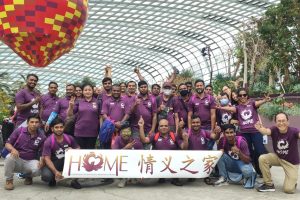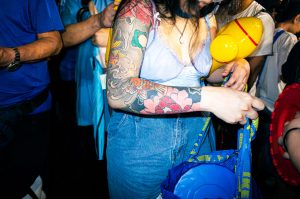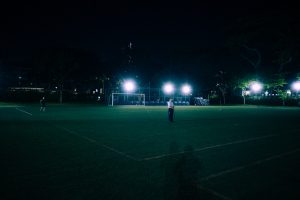‘Through Their Lenses’ is a photo series where we hand disposable cameras to people from different walks of life, giving them free rein to document their everyday realities on film.
Our first collaborators in this series are Madhavan and Selvaa, two migrant workers from India staying in separate dormitories who, up until now, have not been allowed out (with a few exceptions).
(This photo essay was first published on our Facebook in December 2020, and at the time when the photos were taken, Madhavan and Selvaa had still been in lockdown in their respective dorms.)
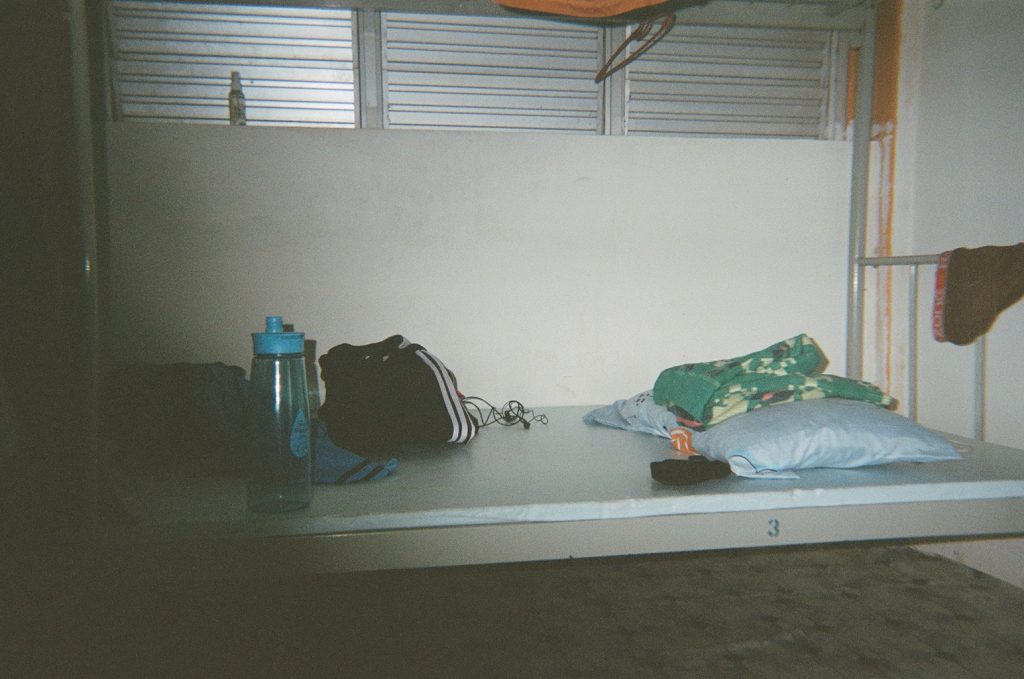
Selvaa: “Most workers prefer to sleep on the floor because it’s more cooling, as these metal-roofed dorms can get really hot from absorbing all the heat in the day.”

Selvaa: “Queues usually take more than an hour to clear, and we typically kill time by using our phones and complaining to each other about why life has to be like this.
Some of us, upon reflecting, feel that it would have been better to stay in our home country during the Covid-19 season, furthering their education to secure a better job in future.”
Madhavan: “I took this photo because I noticed that the new security guard on duty (the usual guy was on leave) at our work site had used a cable tie to fix an umbrella on the railings.
Working in such heat, we find our own small ways to survive.”
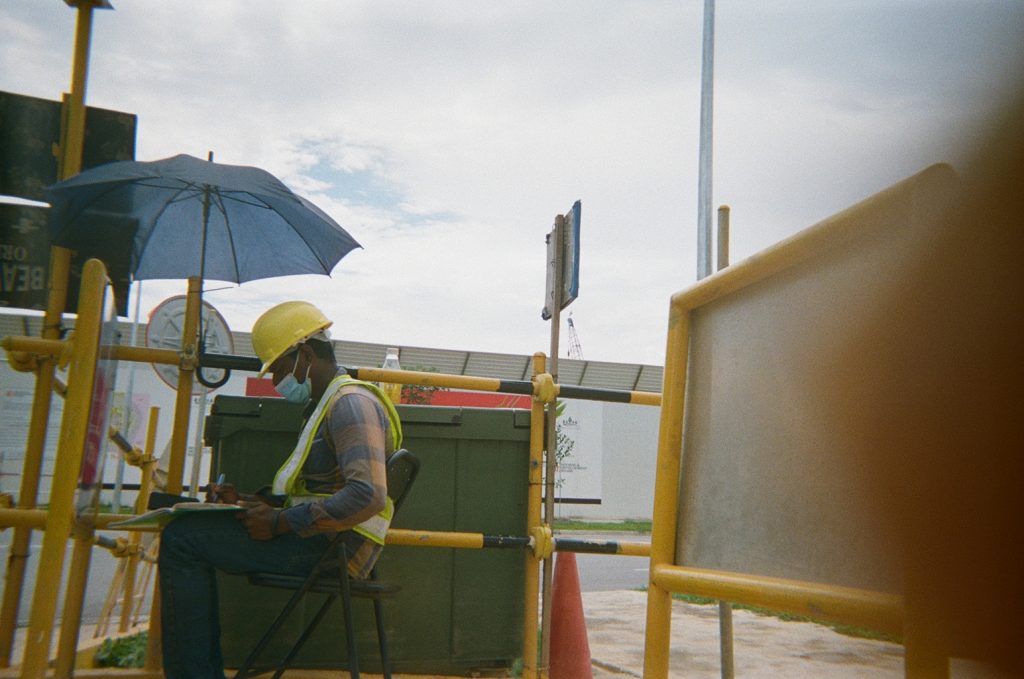
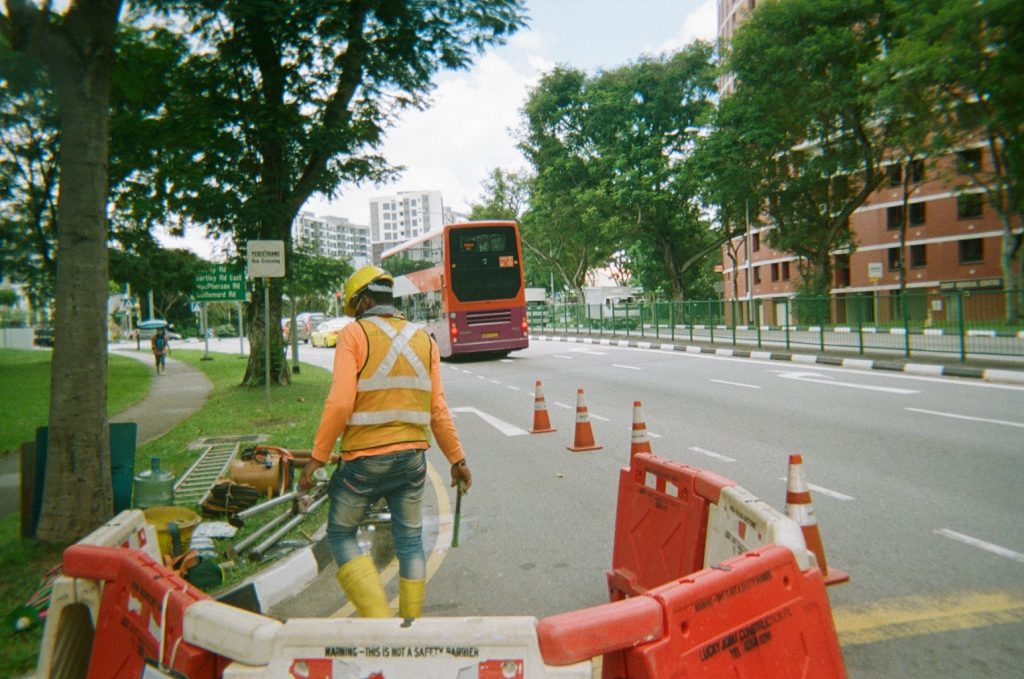
Selvaa: “We have to go up to 3m deep into the manhole, and safety barricades have to be set up before entering.
This can be quite dangerous for us at night; we can get hit by drivers who fail to notice the barricades.”
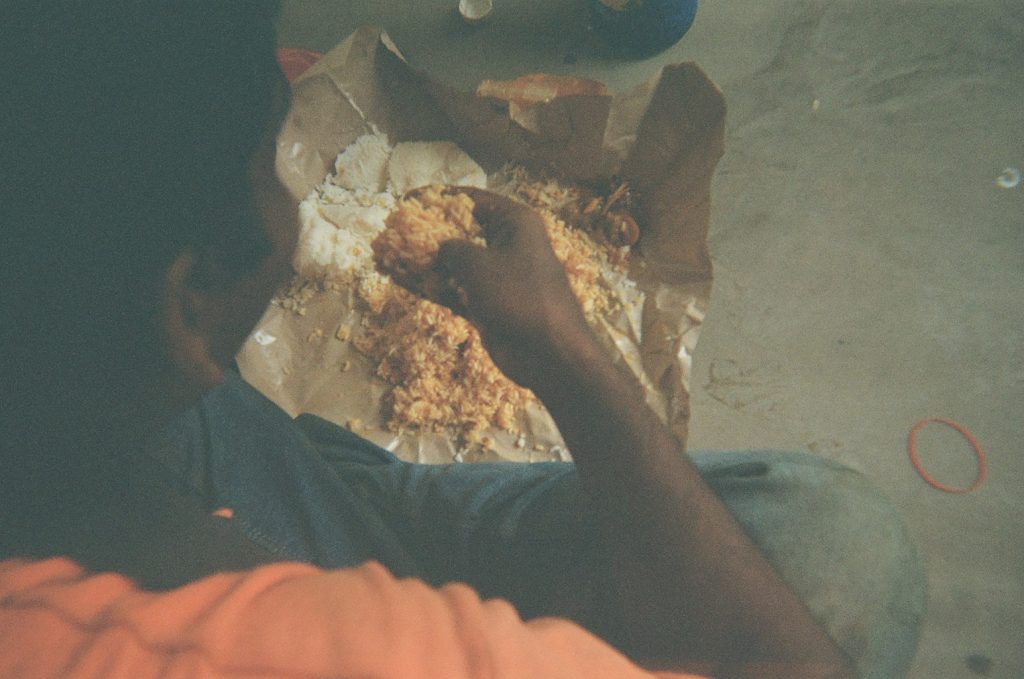
Selvaa: “Lunch every day consists of a “brick” of rice, a piece of fried fish or chicken, and curry, packed at 3 AM the night before.
Like it or not, this is our lunch, we don’t have a choice.”
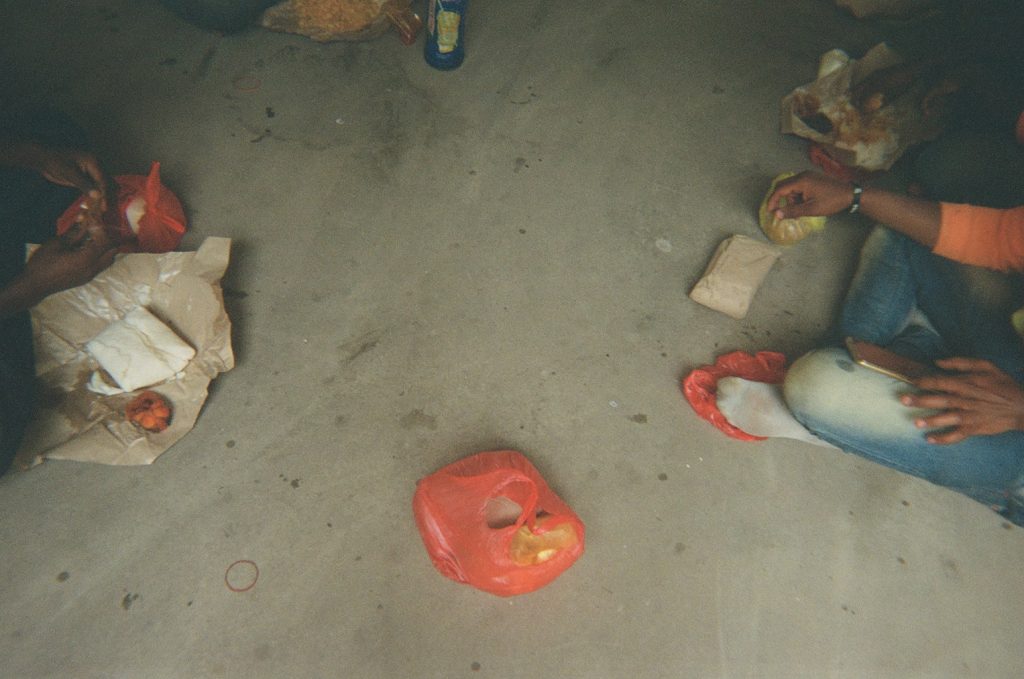
Selvaa: “Most of us finish our food in 15 minutes, and use the other 45 minutes to take naps by the void deck.
This is something I’ll remember as part of the experience of working in Singapore.”
Madhavan: “This was taken outside my dormitory in Punggol when we were in lockdown, and mostly only allowed to shuffle back and forth from work.
For months, this was our scenery for the weekends.”
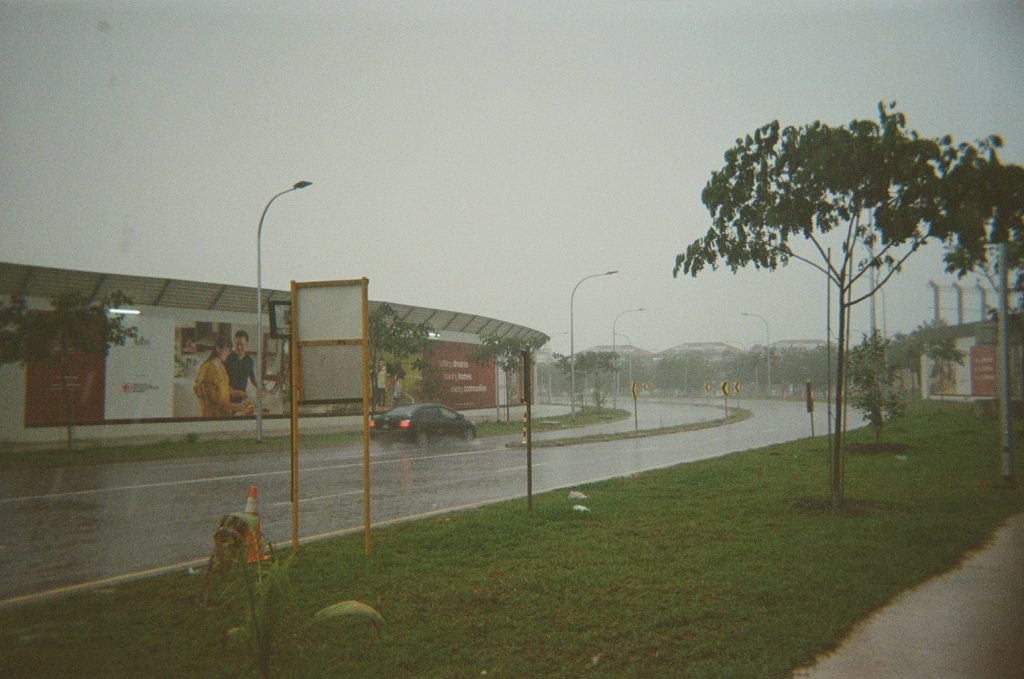
Madhavan: “During lockdown, only 2-3 people could get approval to go to work at one time.
On normal days, there would be more than twenty workers waiting here, but most of them were unable to work on this day.”

Madhavan: “When I took this photo, I thought about us workers who come to Singapore to make a living.
Only the tough ones emerge from the cracks. But for the others, it’s not their fault, because we are not all the same.
Some people prefer to drive, others prefer to make money and pay others to drive for them.”

Madhavan: “Although we’re not allowed on public transport during the lockdown, we could still take walks around the vicinity of our dorm, and from here Coney Island is accessible by foot.
We spent 20 minutes walking through the island on a Saturday evening, cold drink in hand.”
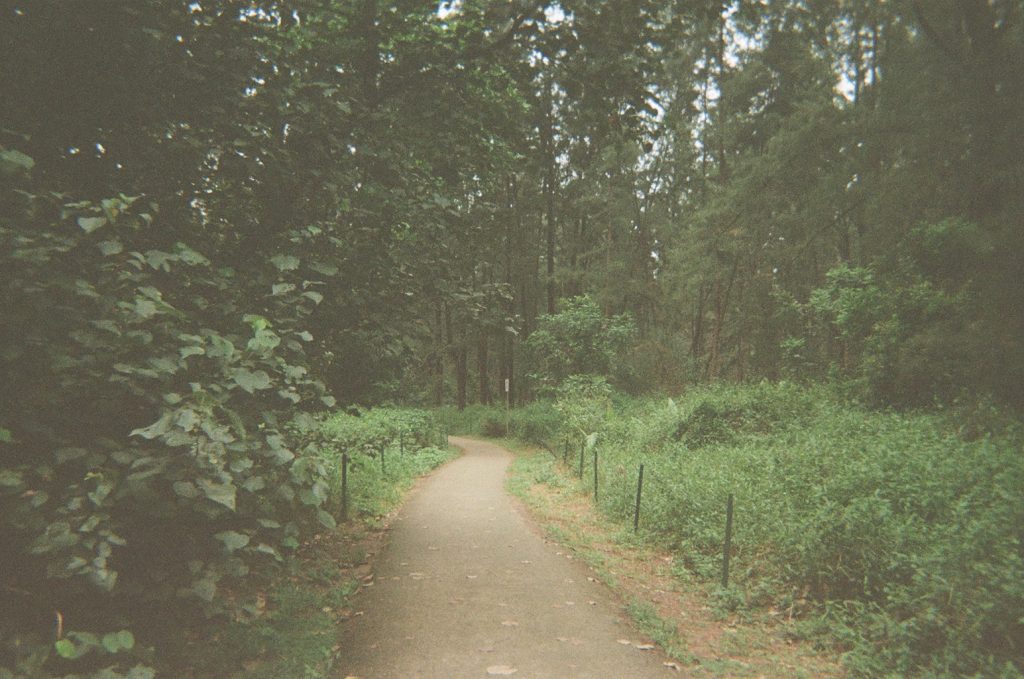
Madhavan: “I enjoy the deep silence one can find here; even though there’s more people around on a Saturday, it’s still peaceful compared to a noisy construction site.
My hometown back in Tamil Nadu is landlocked and I rarely get to see the sea, so it will always be special to me.”

Madhavan: “Towards the end of September, workers who were living at the Temporary Living Quarters could move back to their dorms.
Here you can see that their belongings consist mostly of basic necessities—clothing, pails, mattresses.”

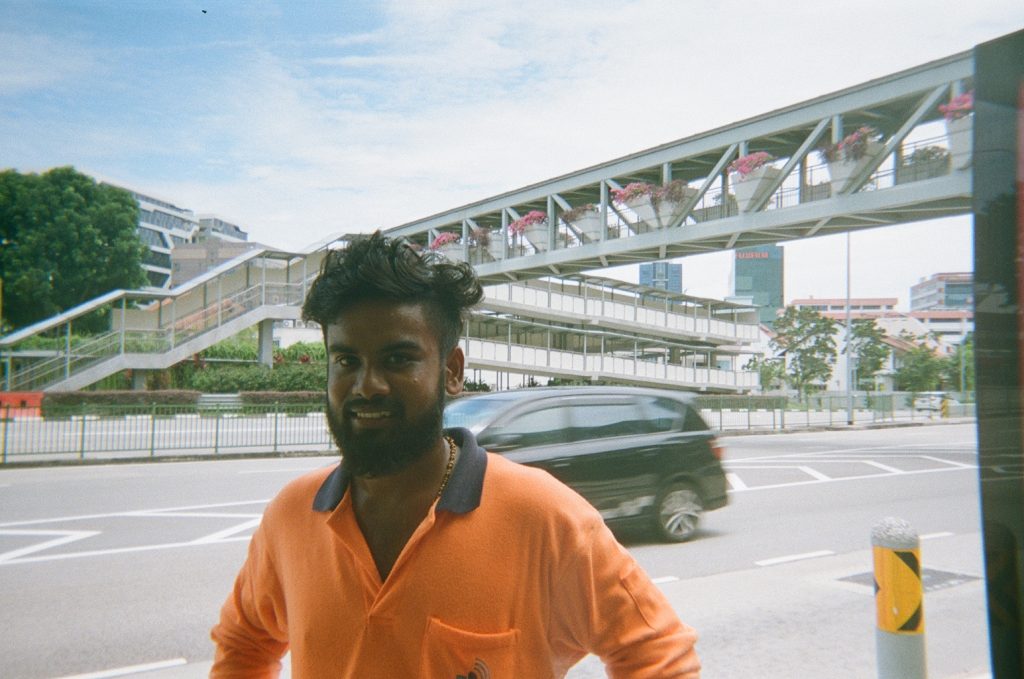
We met Selvaa here to collect the disposable camera after he was done taking the photos.
Selvaa is 24 this year, and has been working in Singapore for the past one and a half years.
We caught him in between work sites on a scorching Saturday afternoon, but still he lived up to his “actor good looks”, as Madhavan, his brother’s cousin, had described him.
Madhavan initially advised Selvaa against coming to Singapore for work so soon, and to further his studies in India instead.
But feeling uncomfortable with his job back home, he decided to take the plunge anyway.

Our first encounter with Madhavan was brief, alongside his friend who was in charge of dorm security.
They had been putting up here for the past four months, rarely moving anywhere else as their work was also on site.
At the time of writing, Madhavan’s wife had just given birth to a baby boy back in India. If he wants to fly home to see them, his work permit will be cancelled, so he has to hold out until travel restrictions are lifted.
Now, he’s trying to get his YouTube channel monetized so he has a chance to go home earlier.
(His short film, $alary Day”, which depicts a slice of the migrant worker experience in Singapore—written, directed, and acted in by him—can be watched here: https://youtu.be/CMEnc9eyVQA)
Madhavan: “I don’t know what else this photo suggests, I just took it as “proof” that us migrant workers miss home during the lockdown.
We come to Singapore because job opportunities are scarce in India. And although I would say that 90% of us are thankful to be working here, we are still aware of the policies that marginalize us. Agent fees are still extremely high, compared to what we are getting paid.
If these things could be improved, we will work even more wholeheartedly than we already are.”

Have an idea for a community or person whose lives you’d want more insight into? Tell us at community@ricemedia.co. If you haven’t already, follow RICE on Instagram, Spotify, Facebook and Telegram.



